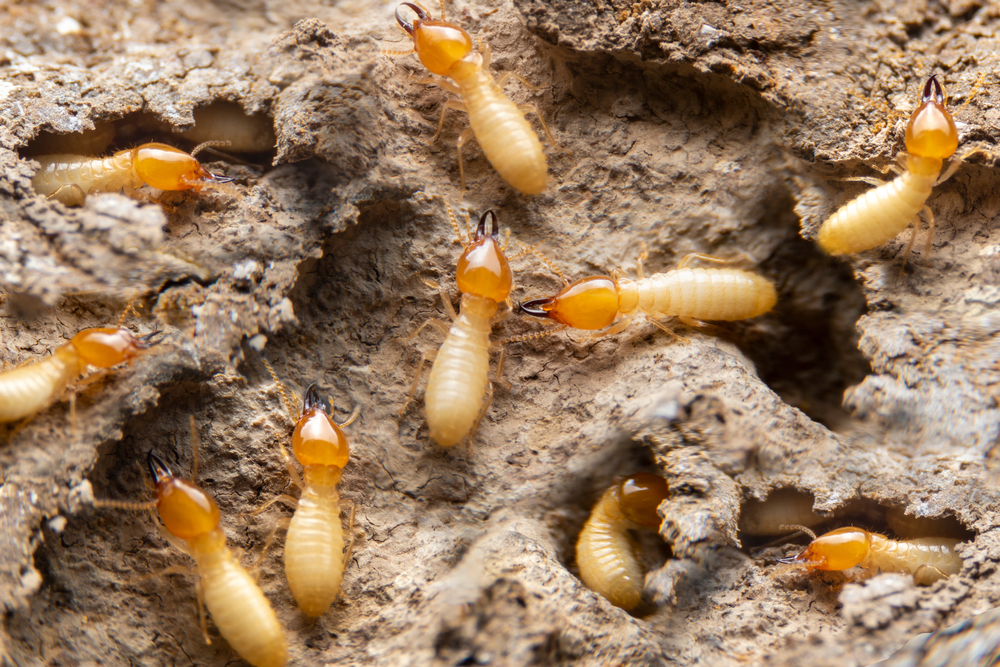5 Termite Facts
- Eastern Subterranean Termites are master builders. They create intricate underground tunnels and galleries to protect themselves from predators and maintain a controlled environment. Their architectural feats are a testament to their survival skills.
- Termite colonies can be surprisingly long-lived. Worker termites, the ones responsible for foraging and maintaining the colony, can live up to five years. These tireless insects work day and night to ensure the survival of their colony.
- Eastern Subterranean Termites have a remarkable digestive system. They harbor tiny, single-celled organisms in their guts that help break down the cellulose in wood. This symbiotic relationship enables them to thrive on a diet that would be indigestible for most other creatures.
- Like in a monarchy, termite colonies have a royal family. The king and queen termites are the founders of the colony and play a pivotal role in its growth. The queen can lay thousands of eggs every day, ensuring the colony’s expansion.
- While termites can be a nuisance to homeowners, they serve a vital ecological role. They aid in the decomposition of dead and decaying trees, returning nutrients to the soil. This process contributes to the health of forest ecosystems. While termites can be a nuisance to homeowners, they serve a vital ecological role. They aid in the decomposition of dead and decaying trees, returning nutrients to the soil. This process contributes to the health of forest ecosystems.
What are signs of termites in your home?
These elusive pests can be challenging to detect but being aware of the signs can help you take prompt action to protect your home. Here are some telltale signs of Eastern Subterranean Termites:
Mud Tubes:
Eastern Subterranean Termites construct protective mud tubes to travel between their underground nests and their food sources. These tubes are usually about the width of a pencil, running along walls, foundations, or even in crawl spaces. If you spot these tubes, it’s a strong indicator of termite activity.
Damaged or Hollow-Sounding Wood:
Gently tap on wooden structures like beams, window frames, or walls. If the wood sounds hollow or papery, it may have been hollowed out by termites. This is a significant sign of infestation.
Discarded Wings:
Termites swarm during their reproductive phase, and after swarming, they often discard their wings. Look for discarded wings near windowsills, doorways, or other entry points. Finding these tiny, translucent wings is a clear sign of termite activity.
Frass or Termite Droppings:
Termites produce tiny, pellet-like droppings called frass. These can accumulate near infestation sites, resembling sawdust or small, dark pellets. If you come across frass, it’s a strong indication of an active termite infestation.
Paint Damage:
Termites can tunnel beneath the surface, causing paint to blister, bubble, or crack. If you notice these paint imperfections, especially in wooden structures, it could be a sign of termite activity.
Sagging Floors or Ceilings:
Advanced termite damage can result in uneven or sagging floors and ceilings. If you see structural changes like this, termites might be the underlying cause.
Visible Termites:
Though less common, you might spot live termites. These are small, pale insects, often described as looking like grains of rice. They are typically seen near their mud tubes or infestation areas.
Clicking Sounds:
Some homeowners have reported hearing clicking or tapping sounds coming from the walls. These noises can be termites communicating within their nests.
Recognizing these signs is crucial in taking timely action to protect your home from further damage. If you suspect termite activity or encounter any of these signs, it’s essential to consult a professional termite control company like Bug Bully.









